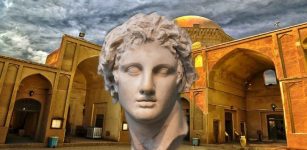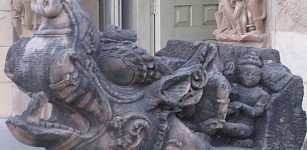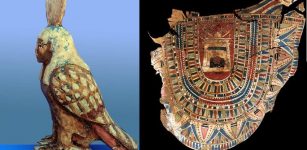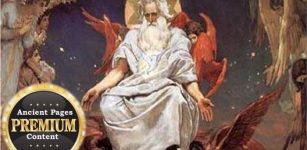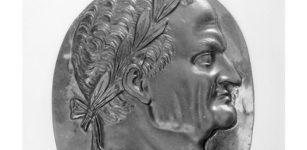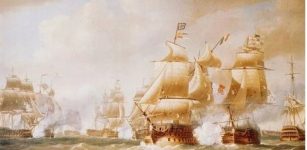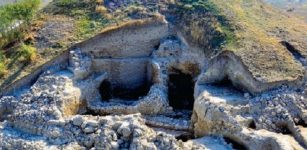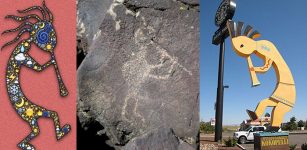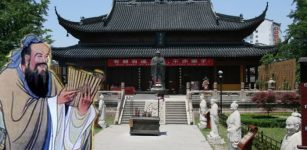Apalala: Harsh Dragon Controlling Swat River Who Became Benevolent Naga King Helping People In Buddhist Tradition
Angela Sutherland - AncientPages.com - Among many tales that survived from the era of northern Pakistan, which was the sacred Buddhist heartland of Gandhara, there was one dedicated to a terrifying water-dwelling Dragon/Naga, Apalala.
According to Buddhist mythological stories, this water god lived in the mountain spring that was the source of the Swat River in Pashawa in India. This area is currently located in Peshawar, Khyber-Pakhtunkhwa Province, Pakistan. Even today, the Swat Province of Pakistan is rich with early Buddhist lore, and there are many different versions of Apalala's story.
Credit: Adobe Stock - Phaitoon
Unlike most other dragons, Apalala had a human head and a serpentine body; he was wise and cunning. Huge and powerful Naga King (or water dragon) always possessed enormous power over people.
Rivers were vital for harvest and life in the region, and Apalala, a Naga King, was capable of controlling the flow of the Swat River and the amount of rain that fell in the area. In other words, people have depended mainly on Apalala.
He helped the local farmers live a good life by protecting the valley from evil dragons attempting to cause droughts, dangerous floods, and sudden rainstorms. In return, the great dragon only wanted some gratitude and appreciation for his good deeds, in the form of some grain offered to him each season.
Unfortunately, this tribute to Apalala stopped because of the people negligance, which made him very angry and vengeful. The Naga King showed his genuine disappointment by sending a great flood to sweep through the valley, and then, he caused a terrible drought, floods, or violent storms devastating local crops.
Wishing to help the flood and drought-affected people, Buddha came to Swat to visit the angered and deeply disappointed Naga King.
One version of the Buddhist legend says that when Buddha decided to visit the vicious dragon, he first wanted to make a big impression on the creature.
He appeared in the Naga King's realm, but he did not come alone.
His companion was Vajrapani ("Vajra in [his] hand"), considered in Mahayana Buddhism as one of the earliest-appearing bodhisattvas - an enlightened being who, out of compassion, forgoes nirvana to save others. Such a great personality is considered a complex spirit that manifests in many forms and symbolizes all the Buddhas' power.
He beat the mountain in which Apalala dwelled with the lightning bolt of tremendous Vajparani.
Now, terrified, Apalala listened to the Buddha's way of convincing him that what he was doing was wrong. It made an impression on the dragon, so Naga converted and became a Buddhist.
He stopped tormenting the people of the valley, and in return, they promised to provide him with a large tribute every twelve years to celebrate his kindness.
The Naga King's attitude to the people changed, and he became widely known for his empathy for humans. In the Buddhist art of the Swat region, there is included a scene depicting the angered Naga King in the act of being tamed by Buddha.
This story, one of the most famous legends in Buddhist lore, is ancient and has been traditionally passed from one generation to another, primarily narrated to Buddhist children to teach them that faith has excellent power and gives true happiness.
Swat River - Credit: Designer429 - CC BY-SA 3.0
However, after his conversion, Apalala still complained that" if he abstained from flooding, as he had promised, he would have no sustenance. Therefore, the Tathagata allowed him to flood the Swat River once every twelve years…" 1
Many old legendary stories usually have different versions. The Apalala's story is not an exception. It is believed that the Apalala story originally referred to an Indra-like god or hero with a thunderbolt-sword who subdued the dragon king. "Indra once turned himself into a gigantic serpent, filling up a whole valley in Swat during a time of famine, and allowed the inhabitants to eat him.
Xuanzang (602 – 664), a 7th-century Chinese Buddhist monk, scholar, traveler, and translator, noted a stupa at the site of this occurrence and explained that Indra was, in fact, an incarnation of the Buddha." 1
Written by – A. Sutherland - AncientPages.com Senior Staff Writer
Copyright © AncientPages.com All rights reserved. This material may not be published, broadcast, rewritten or redistributed in whole or part without the express written permission of AncientPages.com
Expand for referencesReferences:
- Carter Martha L., "A Scythian Royal Legend from Ancient Uddiyana." Bulletin of the Asia Institute 6 (1992): 67–78
Bane, T., Encyclopedia of Beasts and Monsters in Myth, Legend, and Folklore
De Kirk, Dragonlore
Illes, J., Encyclopedia of Spirits




